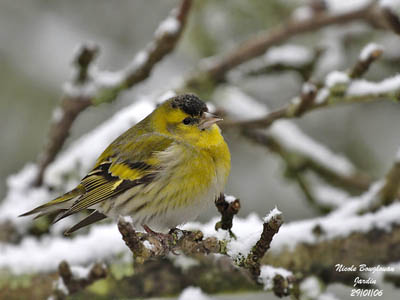
Eurasian Siskin
Spinus spinus
Passeriforme Order – Fringillidae Family
BIOMETRICS:
Length: 12 cm
Weight: 12-18 g
LONGEVITY: Up to 13 years
DESCRIPTION:
Eurasian Siskin is a greenish-yellow songbird.
It is smaller and slimmer than European Greenfinch, but both species often feed together at bird-feeders, and close to European Goldfinch.

Adult male is greenish-yellow overall when seen in wild. But at close quarters, we can see all the details.
Upperparts are greenish-yellow with yellower rump. Upperwing shows black flight feathers with yellow edges. Scapulars are greenish-yellow, slightly streaked with black. We can see two conspicuous yellow wing bars. Forked tail is black with yellow patch at base of outer rectrices.
On the underparts, throat and breast are yellow. Belly is whitish, slightly streaked grey. Flanks are whitish with heavier blackish streaking.
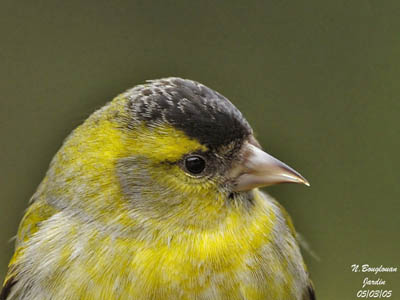
On the head, forehead and crown are black, as the chin. Ear-coverts, cheeks and nape are yellow washed pale grey.
The thin, pointed bill is horn-coloured. Eyes are dark brown. Legs and feet are pinkish-brown.
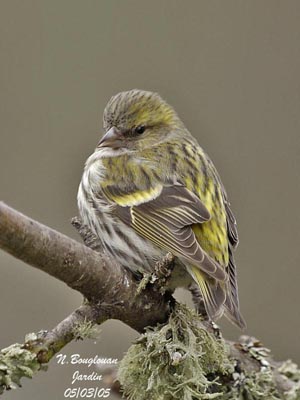
Female is duller than male, lacking black on crown.
Upperparts are pale yellow streaked grey.
Underparts are similar with heavier streaking. Wings and tail patterns are similar but duller, rather grey-brown than black.
Juvenile resembles female, but it is still duller, with greyish-brown colour, heavily streaked overall. It has yellowish indistinct patches at base of outer rectrices, and shows two pale wing bars.
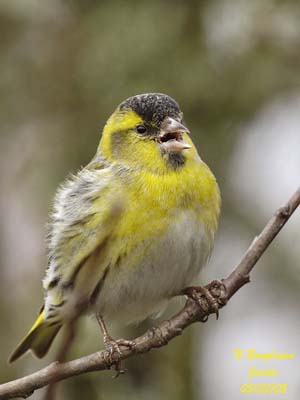
VOICE:
Eurasian Siskin utters thin, plaintive “DLU-ee” as usual call, often in flight. When they are feeding in groups, they give low, dry twittering “tetetet”. When it alights among other siskins, it utters harsh, raspy “chrrr-chrrr”.
Song is fairly melodious, a sweet undulating series of twittering phrases, but ending in a raspy “kreee”. This song is given during the flight displays or from tree tops.
HABITAT:
Eurasian Siskin usually breeds in coniferous or mixed forests, but it prefers spruce trees.
In winter, this species frequents birches and alders located along streams. But they also often frequent gardens and bird-feeders.
RANGE:
Eurasian Siskin breeds throughout temperate northern Europe and into Russia. A separate population occurs in eastern Asia.
The northernmost populations migrate southwards in winter, and Asian populations winter in China. This species is partially resident in its range.
BEHAVIOUR:
Eurasian Siskin feeds mainly on spruce or pine seeds during the breeding season. In winter, they gather in flocks mixed with other species, feeding on seeds or birches and alders. They feed as tits, hanging upside down at the end of branches.
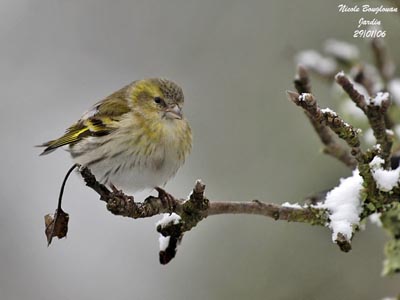
The thin, pointed bill allows the bird to extract the seed from the shell.
Eurasian Siskin is very active, always moving in different postures for feeding. It also forages in groups on the ground.
Before to start the migration, some aggressive displays are observed between males, and some fights may occur between them.
Once arrived on breeding areas, the male erect the black crown feathers in front of the female. The dropped wings display the bright yellow rump. It puffs up the breast and fans the tail, while it utters a creaking note.
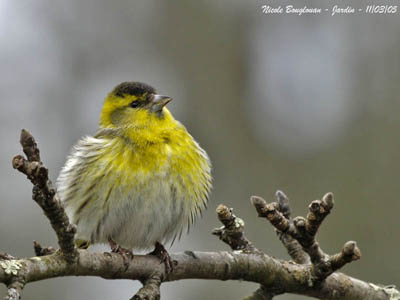
It also performs flight displays, circling the tree tops and giving its musical twittering song. These flights continue during the incubating period, with exaggerated wing beats and full spread tail displaying the bright yellow patches.
FLIGHT:
Eurasian Siskin has rapid undulating flight, usually performed above the tree tops. They fly in small groups or in large flocks of about 50 birds.
REPRODUCTION:
Breeding season occurs in spring.
In early April, female builds the nest in pine or fur, at the end of horizontal branch. Nest is made with fine twigs, moss, lichens, wool, down and fur. It is very small. Eurasian Siskin may nest in small groups, close to each other and high in tree.
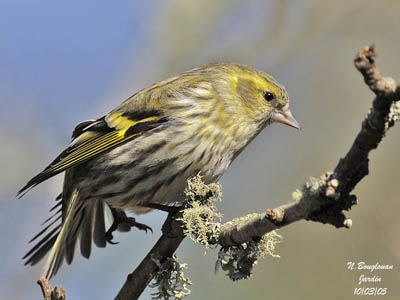
Female lays 3 to 5 white, pale blue or grey eggs, with small spots or streaks. Incubation lasts about 11-12 days by female. Male feeds her during this period.
Chicks are fed by both parents by regurgitated past directly into the throat. This past is made with seeds, insects and water.
Nesting period lasts about two weeks. Young remain near the nest for 4-5 days and fledge at one month. They form small groups with adults which start a second brood, usually in June.
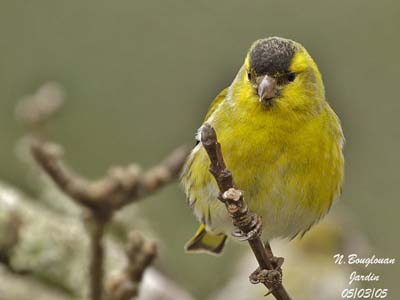
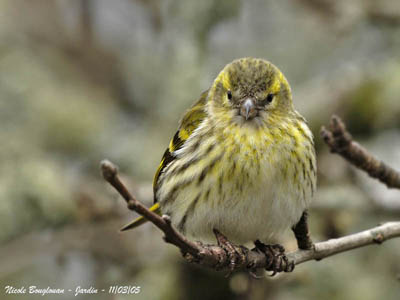
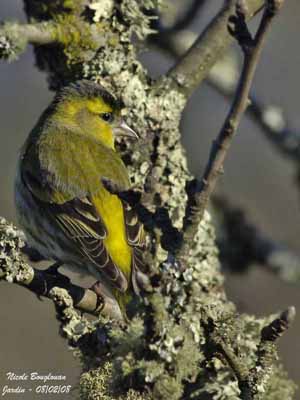
DIET:
Eurasian Siskin feeds mainly on seeds of pine and spruce, but also of other trees. During the nesting period, it also takes insects for feeding the young.
PROTECTION/THREATS/ STATUS:
Eurasian Siskins’ populations are not globally threatened at this moment.
Fr : Tarin des aulnes
All : Erlenzeisig
Esp : Lúgano
Ital : Luchernino europeo
Nd : Sijsje
Russe : Чиж
Sd : Grönsiska
Photographs and text by Nicole Bouglouan
Sources :
THE COMPLETE BOOK OF BRITISH BIRDS – Written by “Royal Society for the Protection of Birds” experts - Préface de Magnus Magnusson - Michael Cady- Rob Hume Editors - ISBN: 0749509112
THE HANDBOOK OF BIRD IDENTIFICATION FOR EUROPE AND THE WESTERN PALEARCTIC by Mark Beaman, Steve Madge - C.Helm - ISBN: 0713639601
Pájaros de España (JL Beamonte)
Wikipedia (Wikipedia, The Free Encyclopedia)